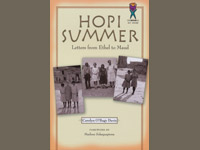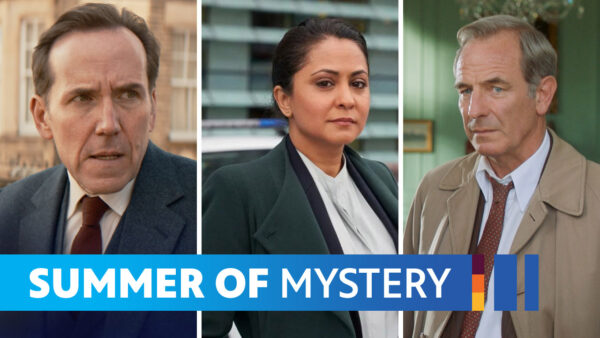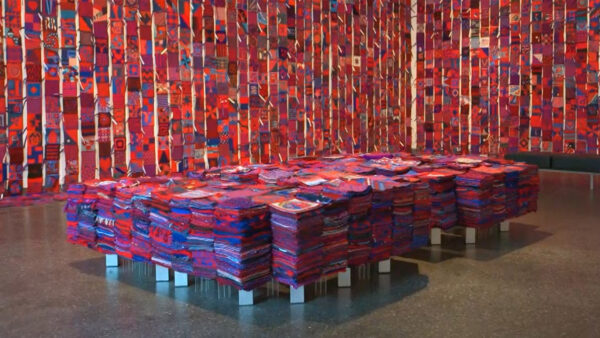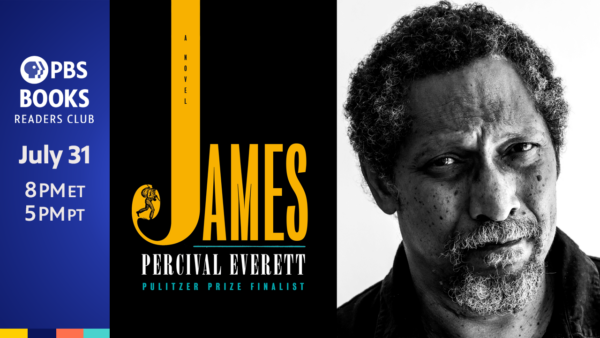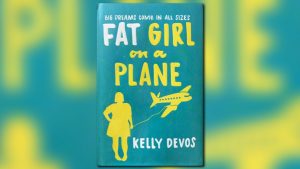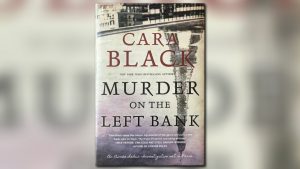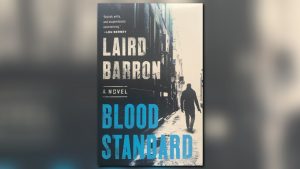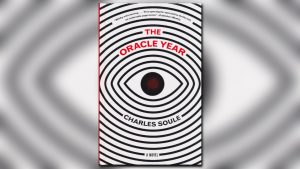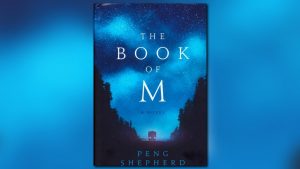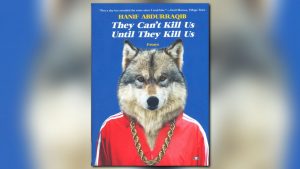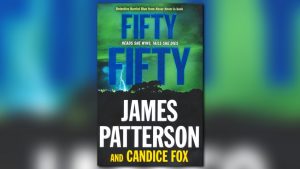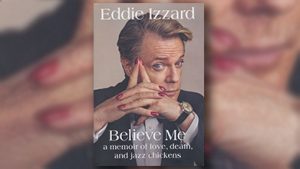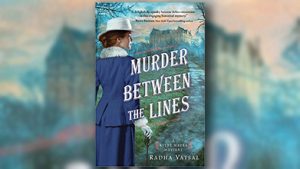In 1927, Maud Melville, a wealthy New Englander, and Ethel Muchvo, a Hopi potter, struck up a remarkable friendship.
Based on diaries, letters and photographs of Ethel and Maud, O’Bagy Davis delves into the relationship that blossomed between two different women throughout many years of triumphs and sorrows.
The story of Ethel and Maud also documents a bygone time in Native American history, “Hopi summer” before wrenching change came to the traditional Pueblo world of the Hopi.
ALBERTO RIOS: Welcome to Books & Co. I'm Albert Rios, your host. And we're joined today by Carolyn O'Bagy Davis, author most recently of Hopi Summer: Letters from Ethel to Maud, which was the winner of the 2011 OneBookAZ award, and is the story of an extended though perhaps unlikely correspondence between a Hopi woman and a mother of a family traveling from Massachusetts in the 1920s. The book is published by Rio Nuevo Publishers. Welcome.
CAROLYN O’BAGY DAVIS: Thank you very much for having me.
ALBERTO RIOS: I can't wait to talk about this book. First much all, I want to congratulate you on the OneBookAZ award. Do you want to say something
about that?
CAROLYN O’BAGY DAVIS: I'm so honored to be part of OneBook, and I -- it's just a thrill. It's amazing, and one thing I'm so pleased about, is that I get to share the story with so many people and be part of all of the literacy efforts, and speak to such a wide range of people, children and adults, and all over.
ALBERTO RIOS: It's wonderful.
CAROLYN O’BAGY DAVIS: It is.
ALBERTO RIOS: So it's a common book, everybody reads the book, or is encouraged to read the book together. This is our news. This is Arizona -- this is great news. I want to talk now just a little bit about how the book is basically structured, and then I'm going to let you say some things about it. It really falls into two parts, and the first one is the initial travel by the Melville family, who go all over the country, and then later the subsequent correspondence between Mrs. Melville and Ethel.
CAROLYN O’BAGY DAVIS: It was difficult for me to reconcile, because it really was two books. I write about the Hopi people, and this is what I thought the book would be about. As I learned more about this amazing trip, the family, this fairly wealthy intellectual family from Massachusetts and they decided they were going to take this grand round-the-country trip in an old car they had never done anything like that. They had never camped out. You think dirt roads, no bridges, no gas stations, no hotels.
ALBERTO RIOS: This is like 1927.
CAROLYN O’BAGY DAVIS: It was such a rugged adventure for them. Mrs. Melville was a matron. She was a professor's wife. So this was a huge departure. Their friends were horrified they were doing this. But they did. They dragged their children along and it was hard to restrain that part of the story of their travels, because the photographs, the journals, it was an amazing trip.
ALBERTO RIOS: And they went all over. They literally went all over the United States.
CAROLYN O’BAGY DAVIS: They made about a 3,000-mile loop, nine months, with their children, their three reluctant children on a road trip.
ALBERTO RIOS: They looked reluctant.
CAROLYN O’BAGY DAVIS: They were so reluctant! I asked them, the grandson, Maud Melville's grandson, what did your mother say about this trip? Was it just the news that the family always talk about it, and he said, no. No. They didn't like the trip, they never spoke about it. But he and his grandmother talked about it a lot, and so that's how he ended up being the recipient of all of the paper and letters. And different items that Maud bought.
ALBERTO RIOS: Maybe we'll take a step back and ask you how you came to encounter this story.
CAROLYN O’BAGY DAVIS: That was pretty amazing. I went to Massachusetts one time in my life, went to Sturbridge Village, and in the local paper was a story about this man who had grandparents who had gone on this big trip, and it – the front page had all these Hopi pictures.
ALBERTO RIOS: This was just by chance.
CAROLYN O’BAGY DAVIS: It was by chance. But I had been working up at Hopi, and I recognized the villages, and I was so struck that I felt this compulsion to contact. And so I found Robert Melville, and he was just wonderful from the start, to have this person call up and he invited know his home, and he showed me letters, and journals, and just from the very first telephone call he was so welcoming. And it just seemed that summer, 2002, it was 75 years after the Melville’s trip, sort of seemed like it was meant to happen.
ALBERTO RIOS: Yeah. Well, your only trip to Massachusetts?
CAROLYN O’BAGY DAVIS: Yeah.
ALBERTO RIOS: You encounter this small public education that happenings to have images you are familiar with. And the connection is made.
CAROLYN O’BAGY DAVIS: It was just astounding. I don't go back east. I'll go to Hopi any time.
ALBERTO RIOS: Well, as the Melvilles did. So once they -- so you have contacted the family and spent a lot -- that's how you found these archives.
CAROLYN O’BAGY DAVIS: Yes. I actually -- they -- Mr. Arnold copied everything for me, so I worked from the copies. But I did go to Wesleyan University when the Melvilles went to the Hopi country, Mrs. Melville fell in love with all of the arts, and she bought everything. And her poor husband spent most of his time at Hopi getting crates and boxing things up and putting them on a wagon to send to the railroad in Winslow. And the family had this immense collection, big baskets and pots, and rattles, and they had them in storage for all those years. And then Robert Arnold decided that it was time to give them to a museum. So he donated them all to Wesleyan.
ALBERTO RIOS: And these objects were the original objects that are discussed in these letters.
CAROLYN O’BAGY DAVIS: You see -- and some of the pottery, some of the baskets are in these pictures. And it's pretty fun to – when they opened the cupboards, I recognized a crow mother basket, so it was really like seeing the letter and seeing the objects.
ALBERTO RIOS: Amazing. Mr. Arnold is the grandson of Maud and Carey Melville.
CAROLYN O’BAGY DAVIS: Yes. He's the grandson. And he was the caretaker. And he felt that it was such a valuable historic collection that he preserved it, and then he really generously shared it with me.
ALBERTO RIOS: And let you tell this story, which I'm so glad is out for the world.
CAROLYN O’BAGY DAVIS: It was interesting, because when he gave -- there were about 140, 150 photographs. And I thought oh, I have the letters; I thought I'm just going to fly through this book. But I started taking these pictures up to the Hopi natives and I knew the villages, but I didn't know the people. And eventually we identified all of the people we talked to the families, and the people were so -- they were so happy to see these pictures of -- one man in his 80s had tears in his eyes when they showed him a picture of his mother holding his brother as an infant, and he said, I never saw a picture of my mother like that. So it was wonderful. I would print all these extra copies and I would go up and when I found a family I would share the pictures and then they shared stories. And so this --
ALBERTO RIOS: What a wonderful exchange.
CAROLYN O’BAGY DAVIS: It was.
ALBERTO RIOS: Pictures for stories. So photographs were not – the technology to take photographs was not part of the culture at the time in Hopi Land. The tourists coming through, or the voyagers coming through, whatever, they would take pictures, but they would take the pictures away.
CAROLYN O’BAGY DAVIS: Yes.
ALBERTO RIOS: And returning these, these images to these people sounds like an extraordinary –
CAROLYN O’BAGY DAVIS: That has been amazing. Because, no, there were no cameras at Hopi back then. And a lot of people that went to Hopi didn't have cameras themselves. But I've written three Hopi books, and I sometimes will be contacted by a family that will say, there's a picture of our grandmother in the back row of that, would you give us a copy? Because a lot of people have no pictures of their ancestors, particularly from the '20s and '30s. So, no, there were -- you have to understand that this was a very, very remote place in the 1920s. So --
ALBERTO RIOS: As remote as places get, really, in terms of the American landscape. This was another place all together.
CAROLYN O’BAGY DAVIS: And it was remote geographically, but culturally too.
ALBERTO RIOS: And it's so striking that Mrs. Melville would be so attracted to this -- hit to be exotic to her, or so different, and yet she really --
CAROLYN O’BAGY DAVIS: I believe that she found this mystical connection with the Hopi natives. I think it changed her life. I think the rest of her years she wrote to Ethel, she gave a lot of talks, she was very active in Indian rights associations. So I think the time that they spent there had a powerful impact on her. And the friendship she forged with Ethel and the letters they wrote to each other kept that connection going until – the reason they stopped writing was because Ethel went blind. So she could no longer write letters.
ALBERTO RIOS: Well, the letters are an interesting thing. The physical objects, because the letters that Maud wrote to Ethel don't exist. Is that accurate?
CAROLYN O’BAGY DAVIS: That's correct.
ALBERTO RIOS: Because Ethel would have had to use the paper, I would think, anything that she had in her possession they were using, and so those letters were somehow otherwise employed?
CAROLYN O’BAGY DAVIS: I think they were not saved, they weren't looked on like Mrs. Melville would have looked-to-at the letter, to put it away and save it. You have to it this Mel Venus Williams lived in a big house, he was a professor, they had a lot of room, they had some wealth. On the other hand, Ethel lived in a tiny, tiny two-room house at just below first Mesa. Her life was so much geared to survival, that saving letters was certainly not something that she was invested in doing.
ALBERTO RIOS: And the idea that Ethel could write, a Hopi woman, 1920s could write in English persuasively, compellingly, from the heart, this seems to me --
CAROLYN O’BAGY DAVIS: Oh, I believe Ethel was a very intelligent woman.
ALBERTO RIOS: Absolutely.
CAROLYN O’BAGY DAVIS: From her letters you could tell she didn't have extensive schooling, but like many Hopi children she was probably taken away to one of the boarding schools, Kings Canyon or down here, even California. The children were taken out of their homes when they were 5 and 6 years old. And many times they didn't get to go home to see their parents for five, six years. So -- but most of the Hopi people did learn English in the schools. So even in those earlier times they spoke English.
ALBERTO RIOS: And those letters that Ethel wrote, they were sparse, but full. It was just a few words, but they seemed to say so much.
CAROLYN O’BAGY DAVIS: The way she wrote, it did, it conveyed a lot of emotion, and -- but she had a life that had a lot of tragedy and a lot of passion, and that comes through in her pretty simple words. But that comes through in her letters.
ALBERTO RIOS: Let me take a moment to remind our viewers, this is Books & Co., I'm Albert Rios, your host, and we're joined today by Carolyn O'Bagy Davis, talking about her book, Hopi Summer: Letters from Ethel to Maud, the account of two unlikely correspondents who met in the 1920s. Well, when they met each other, maybe you could -- let's physically set this up. The Hopi Mesas, did they intend to go there, the Melvilles?
CAROLYN O’BAGY DAVIS: Oh, well, their daughter's best friend aunt was a missionary. Mr. Melville, his intent had again to go to the Grand Canyon that. Was pretty much the reason he went on this trip. But because it was not too far, he agreed that they would go up and they would visit Ms. Ryan, who was a missionary. And they were going to stay a night. And their visit extended only eight days, but that put them drastically behind on the schedule that they had planned to make around the country trip. But they were so enchanted, and Maud was so reluctant to leave, and really the only reason that they did finally was because the rains started, and they would have been marooned. There were no bridges, and as it was, when they did leave, they were stuck because the washes were full and they couldn't go any farther, and they were ultimately rescued by some Navajos who used their horses to pull them through these washes. And these are big, big flooded washes. Dangerous.
ALBERTO RIOS: Right.
CAROLYN O’BAGY DAVIS: So that's why they left. I think Maud would have stayed a lot longer.
ALBERTO RIOS: The way you've described it, it was a scary exit. They were in some peril.
CAROLYN O’BAGY DAVIS: Well, I can tell you I was up by some of those washes one night when one of the ladies took me out to see her great grandmother, and we got stuck, and we were out there and it was midnight, and we couldn't – we had water all around us, and that dirt turns to mud, my windshield wipers were flipping mud. It's pretty harsh and remote country.
ALBERTO RIOS: Yeah. Well, harsh and remote country, and harsh and remote living. I think specifically of illness. Tuberculosis in particular, seems to have wrecked havoc on Hopis, and Ellen -- Mrs. Muchvo --
CAROLYN O’BAGY DAVIS: Ethel Saya Muchvo – Muchvo was her married name.
ALBERTO RIOS: She lost her first 11 children.
CAROLYN O’BAGY DAVIS: Yeah.
ALBERTO RIOS: And not at childbirth. They were at different stages --
CAROLYN O’BAGY DAVIS: They all were born healthy. 11 children were born healthy. One of the missionaries wrote to Mrs. Melville and said, "Maud remains ever hopeful and she just wanted to have a child." Because a Hopi woman has a child because that child carries the lineage, that child becomes one of the clan members. So it's very important that a Hopi woman would have children. But to lose the children and some of the letters that she wrote, when she would have Minerva, and she would watch Minerva get sick. Clifford almost reached his 6th birthday. I can't even imagine living that way, knowing that one day your child could start to get sick and then you would lose that child.
ALBERTO RIOS: Heartbreak after heartbreak. And then to watch it in the context of her husband being sick.
CAROLYN O’BAGY DAVIS: Yes.
ALBERTO RIOS: It’s complicated, because we can't tell for sure if he was passing it on --
CAROLYN O’BAGY DAVIS: Of course.
ALBERTO RIOS: Well, we have to think he was. But her love for him was certainly not going to --
CAROLYN O’BAGY DAVIS: And she had quite a passionate -- that was interesting, that that came through. She stood by him, and there were also the complications of him either -- if they went – if they followed the Jesus road, they could get help from the missionaries, but they had the pull to stay traditional, and this pull to participate in ceremonies. At a tremendous cost. When he couldn't farm and he couldn't raise sheep, it was a tremendous cost. It was survival.
So it was a very difficult time. And Ethel was a strong lady, in a lot of ways I think Maud saved her, because Maud could easily send things, Maud could buy some pottery, but it was a huge thing for Ethel to have a place where she could sell. On the other hand, Maud loved it. Maud gave her talks, and this was a wonderful thing for Maud to be able to do.
ALBERTO RIOS: It was symbiotic. They gave something to each other.
CAROLYN O’BAGY DAVIS: It was, yes. Someone asked me one time if they -- their sense that it was just a one-way, that Ethel needed Maud to survive. I think Maud found in Ethel, she found an inspiration; she found a course for her life that was very different than it had been before she went to Hopi.
ALBERTO RIOS: Completely different, it strikes me. And to have somebody speaking about the Hopi on the East Coast. That had to be something.
CAROLYN O’BAGY DAVIS: Oh, she had little lists made, if you -- if she took some of her artifacts to a ladies' luncheon, it would be this much money, fun came to her house, or if she gave a talk with slides and she had this little business that she was just having the best time. She loved it.
ALBERTO RIOS: She had the business, but you say somewhere in there she sent at least some of those proceeds --
CAROLYN O’BAGY DAVIS: Oh --
ALBERTO RIOS: Back to Ethel and the missionaries, right?
CAROLYN O’BAGY DAVIS: She was buying these things; Ethel needed this outlet, because this was also the depression. So the traders were not going to be buying any pottery. So it was a relationship that helped both of them so much.
ALBERTO RIOS: We've mentioned now the missionaries and the traders. And they are very interesting characters in this story. Good, bad, in between? It's a very complex situation it strikes me. Could you talk a little bit about that? There's the one line about the missionaries, as we hear about them a little later on, it says, according to the missionaries, there were two kinds of people -- those who believed in God, and those who believed in Satan. And so intricate decisional Hopi way was -- the traditional Hopi was in peril.
CAROLYN O’BAGY DAVIS: The missionaries went out with this attitude that they were bringing the light, the right way to the people. It was very unyielding. It's not that way today. There's more of a coexistence between traditionals and Christian Hopis. At the time there were really unfortunate things going on, because the missionaries insisted, if you are baptized, you must renounce everything. And that meant you lost your home, you couldn't live on the Mesa, you had to go down below and live with the dead, that's where they buried people. So you lost your culture, you lost your fields; it was a huge choice for the people that made that choice. So it was -- it was a difficult thing, and yet the -- at that time the missionaries often represented survival. Particularly for Ethel. It was really survival.
ALBERTO RIOS: There were some acts of let's call this grace, I don't mean that in a religious way, in that there was some food and gift distribution for different events, Christmas, let's say. Whether or not you were converted.
These were attempts to convert, but there was some --
CAROLYN O’BAGY DAVIS: well, they would have the big Christmas parties and everybody went because there were gifts, and there was food, and feasting. The missionaries had the best intentions. They truly believed they were doing good. Looking back, we see it from a different perspective. We now look on the loss of culture, and perhaps that is a little unfortunate, but the missionaries were incredibly dedicated people. They were sent there, and the women were sent to the – the American Indian reservations, men got to go to the exotic places like Africa, but women on the reservations had – they felt starved along with everybody.
ALBERTO RIOS: They were giving their lives and their health. They had to periodically take sort of sabbaticals because they were getting this tuberculosis as well.
CAROLYN O’BAGY DAVIS: It was a very hard life. It was a hard time. There was -- there was no help, there were few stores. It was pretty rugged existence.
ALBERTO RIOS: And what about the traders? There's one trader in particular who seemed to be an outlet for Ethel's pottery.
>> Well, Tom Pavatea was a Hopi. He was a very successful Hopi trader. He had a trading post at the bottom of First Mesa. So people trusted him, and he did a lot, and he went between those two worlds of the traditional Hopis and the missionaries, and he also interfaced with the larger world, with the big cities. So he was an unusual man in that he could navigate all through there.
ALBERTO RIOS: But you use the word Bahanas, outsiders?
CAROLYN O’BAGY DAVIS: White people.
ALBERTO RIOS: Well, you know, in terms of the -- we're talking about these articles of art that she's constructing, and their culture as well. It was hard to read about them making things, and having to give them up. That was one thing. But they were also surviving. And you -- it's clear that was the first priority.
CAROLYN O’BAGY DAVIS: Was to survive.
ALBERTO RIOS: Right. But the almost -- the great irony that things -- it cost more to ship things than to buy them, to purchase them.
CAROLYN O’BAGY DAVIS: It did.
ALBERTO RIOS: A hard thing to read.
CAROLYN O’BAGY DAVIS: Yes.
ALBERTO RIOS: It's hard to know where to place the value there.
CAROLYN O’BAGY DAVIS: Even one time Ethel wrote that she had made some things, but she didn't have any money to ship. Ethel had no money. Well, people on the reservation had no cash it.
ALBERTO RIOS: was barter system, as you've explained. Much more so. So money was a curious thing. You talk about the tin money the traders would give.
CAROLYN O’BAGY DAVIS: Yeah. Cash was pretty rare up there. But as far as the arts, I think that even today the arts are very important for support. And the trade in art in baskets and battery is very important to the people that live traditional. Because the Hopi reservation is a long way from any city, a long way from jobs, and they are quite dependent on the people coming to purchase their art.
ALBERTO RIOS: It's a way of sharing culture.
CAROLYN O’BAGY DAVIS: Oh, it is. Absolutely.
ALBERTO RIOS: Well, thank you. We've been talking today with Carolyn O'Bagy Davis, about her book Hopi Summer: Letters from Ethel to Maud. It's a wonderful book. I'm Albert Rios. For Books & Co., thank you for joining us today. And we hope to see you again very soon when we bring you another good book.
